Do you look forward to that time of year when you can walk under a jacaranda tree in full bloom — the gorgeous carpet of fallen purple blossoms caressing your feet, then looking down, the intense purple colour suddenly turns your world upside down — the grass has now become the sky!
This is the first of three art conservation blogs that delve behind-the-surface of our Collection favourite Under the jacaranda by R. (Richard) Godfrey Rivers (1858-1925), read on as we analyse the pigments with the help of microscopes, X-rays and UV light.
What’s under the Jacaranda: Hidden in the X-Rays
What’s under the Jacaranda: Keeping the painting under glass
In Under the jacaranda, we see Rivers and his wife Selina enjoying afternoon tea under the shade of a jacaranda in full bloom, at that time a landmark in Brisbane’s Botanic Gardens. The tree fills the sky and covers the ground with this intensive purple with Selina’s bright red parasol portraying a vignette of civility. By 1903, when Rivers painted Under the jacaranda, this grand shade tree was 39 years old. Native to south-central South America, it was the first jacaranda grown in Australia by the Botanic Gardens Superintendent.
R. Godfrey Rivers ‘Under the jacaranda’

The jacaranda featured in ‘Under the jacaranda’
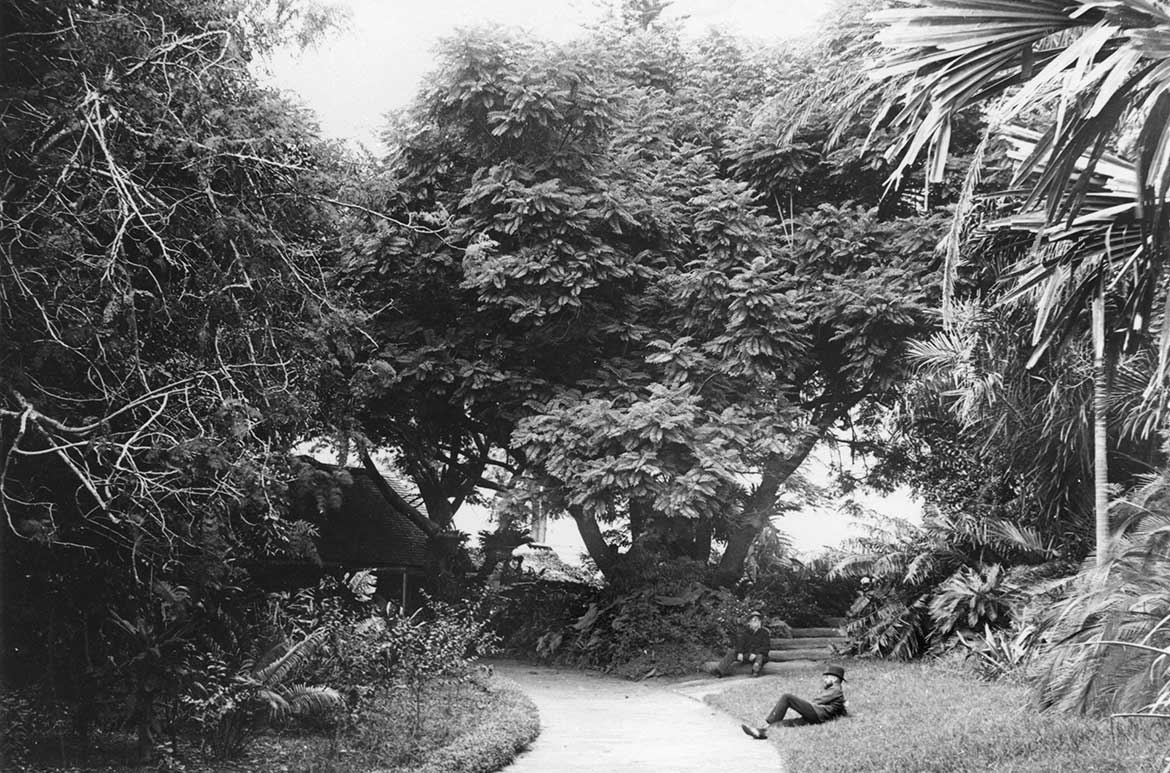
Under the jacaranda is dominated by its purple hue. Can you guess how Rivers achieved the beautiful colour of the jacaranda flowers? It comes as no surprise to find that Rivers combined red and blue to make his purple — but what do we know about the pigments he chose?
Read more about the painting ‘Under the jacaranda’

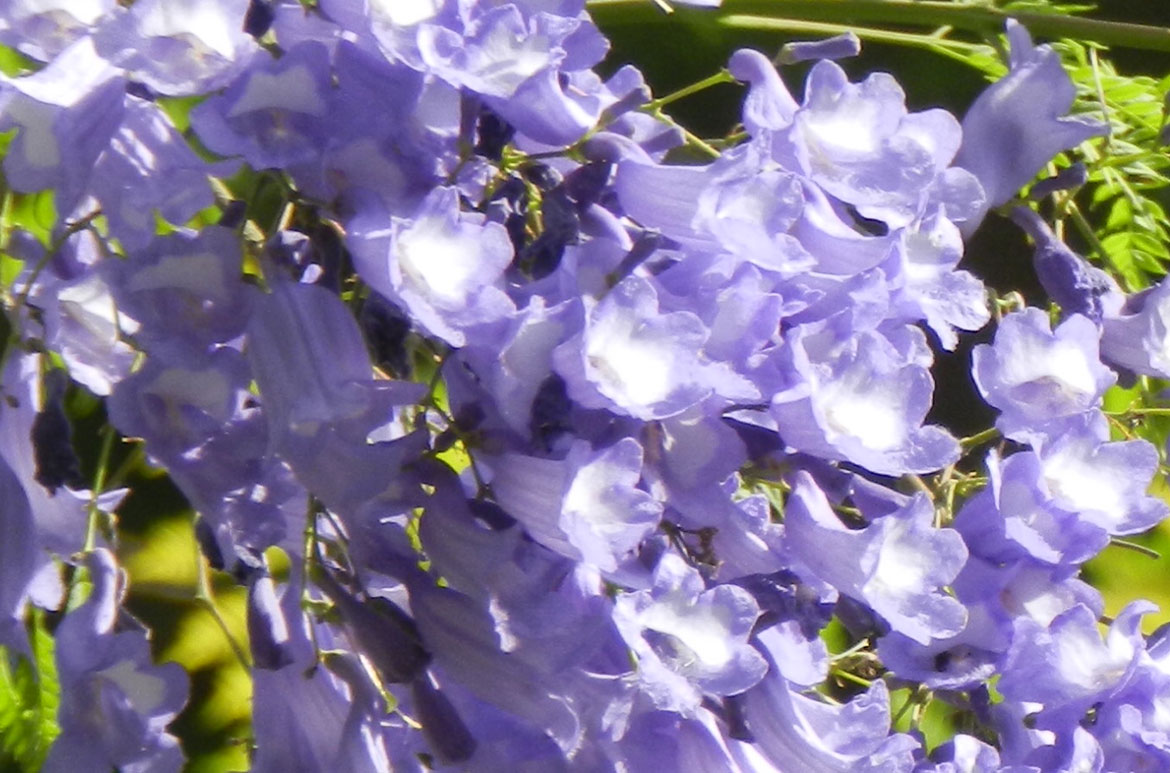
There are a number of ways we can analyse pigments, one is to look at paint layers in cross-section. This enables us to see all the different pigments that make up each layer of paint colour — and we can then use this analysis to confirm the chemical composition of each pigment. Cross-sections are prepared by removing a small sample of paint from an existing crack or edge of the painting using a micro-scalpel. These tiny flecks of paint are then embedded in polyester resin and cut through the surface to give unique insight into how the paint is mixed and transferred to the canvas. Paint samples were originally prepared in 2001, and they still amaze us, both for their extraordinary beauty but also for the wealth of information they continue to reveal.

As we can see in the sample taken from an area of cracked paint among the purple jacaranda blossom. From the base up, is the white commercial ground preparation of the canvas support, together with occasional particles of black pigment to soften the whiteness of the ground, and his application of coloured paint on top. Above this white ground are layers of red and purple paint, it’s difficult to see the individual red and blue particles, mostly as the red is a lake (dye) and is very small in size — you can however see some larger blue particles.
By examining this sample using a powerful scanning electron microscope and analyzing the X-rays that are emitted (SEM-EDX) we can confirm the atomic composition of each particle, and thus identify the pigments used.

In this backscatter image from the scanning electron microscope, we can see that the canvas has come supplied with a double ground comprising lead white, barium sulfate and zinc oxide. As was typical, lead white is in highest concentration in the upper ground, providing a good drying, opaque surface on which to paint.
Each of the white ground layers shows up at different grey scales indicating different elemental compositions. The top layer of ground contains more of the heavier atomic mass lead white and therefore is lighter in grey scale.
Further SEM-EDX analysis confirmed that in the paint layers above the ground, Rivers produced his distinctive jacaranda purple by combining layers of cobalt blue, Madder lake (a strong purple-red colour, a pigment of this color formerly obtained from the madder root, and a natural organic lake precipitated onto an aluminium salt) and alizarin crimson (a synthetic dye also precipitated onto an aluminium salt) together with lead white.
SEM-EDX images only come in black and white and to get a better visual understanding of where these pigments have been used, ultraviolet (UV) fluorescence imaging can be used.

What we see under UV light is a brightly fluorescing top layer not visible when looking at the sample in visible light. Madder lake is an ancient vegetable dye famous for the bright pink-orange colour it emits under UV fluorescence — a result of the purpurin dye it contains, together with natural alizarin. In the image of the cross-section under UV light we can see the bright pink-orange fluorescence of Madder lake used in the top layer of the purple paint, combined with particles of cobalt blue. The paint layer under this does not appear to contain as much red, so it was likely a bluer shade. Below this, we see again layers of purple, however, here Rivers has used alizarin crimson — the synthetic (and less expensive) alternative to Madder lake, which does not contain purpurin and thus does not show the distinctive pink-orange UV fluorescence.
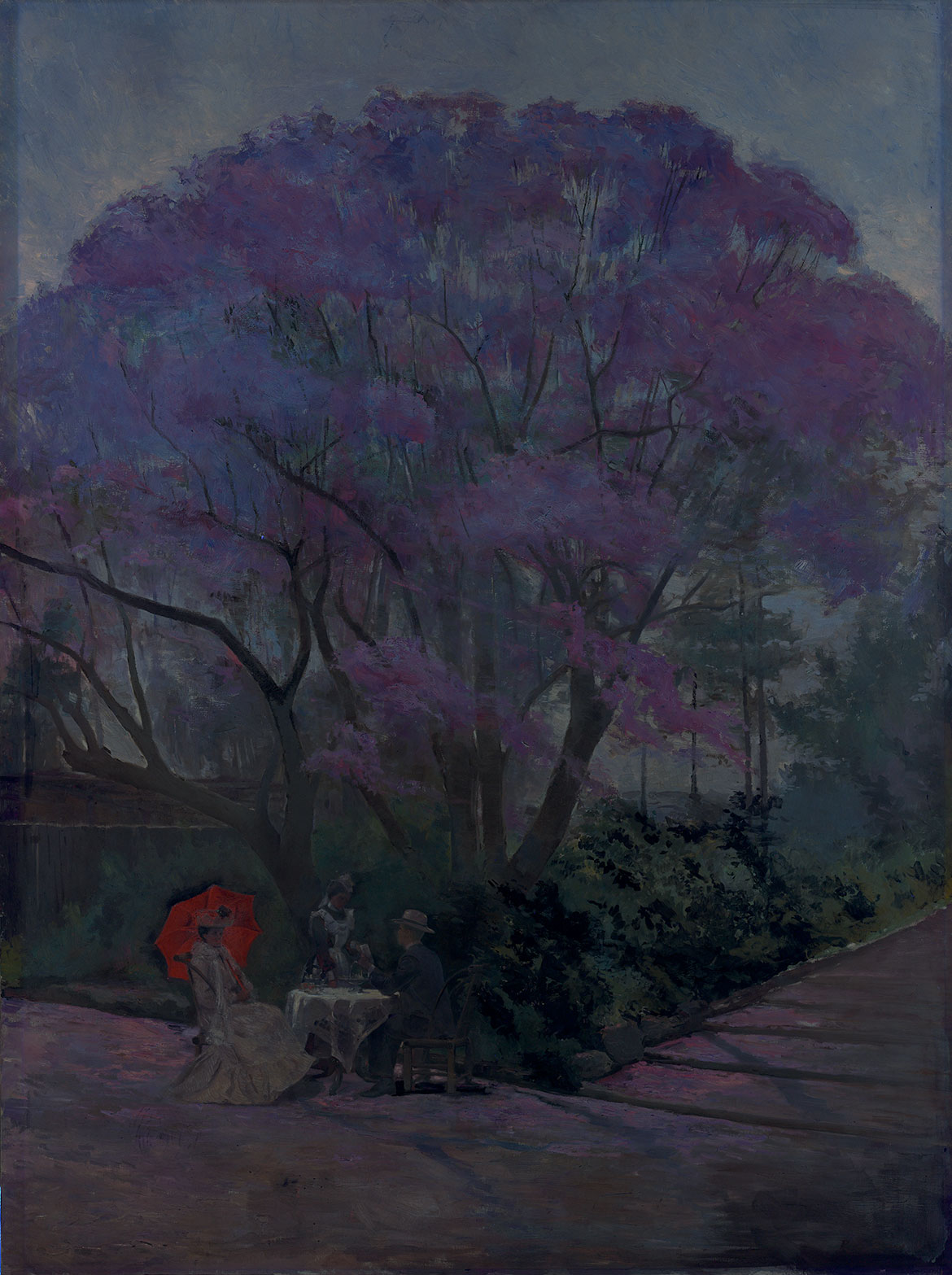
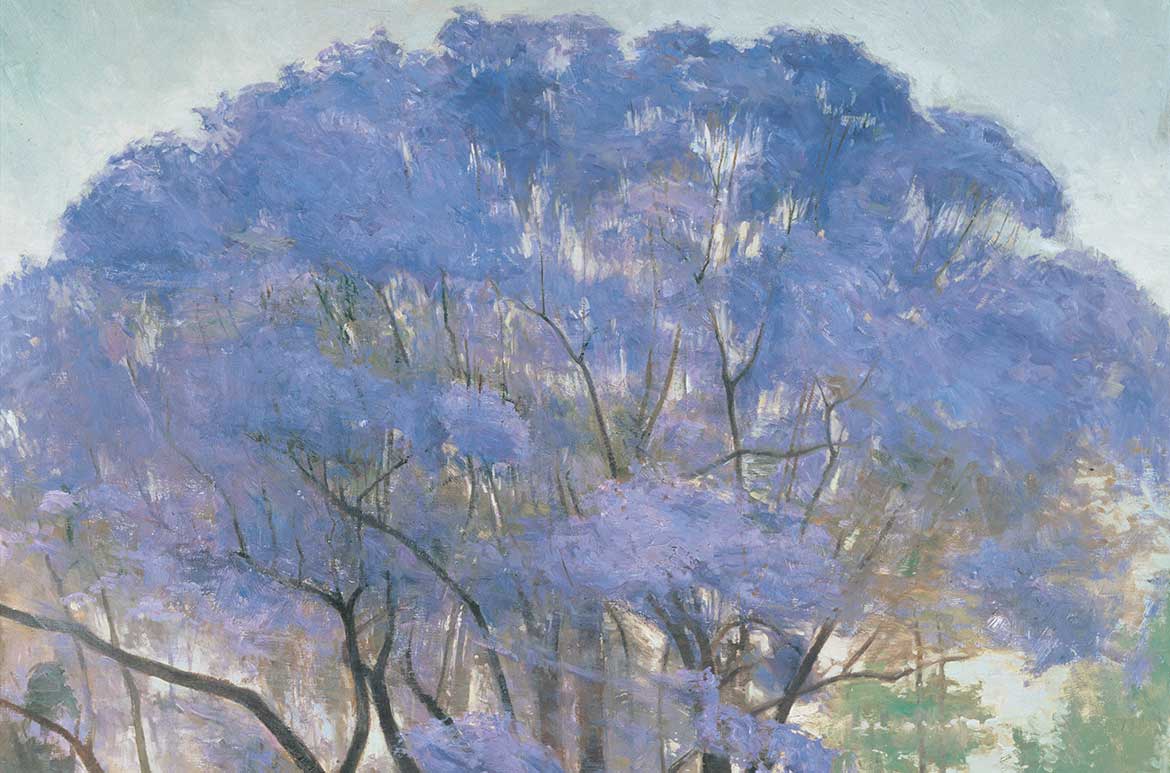


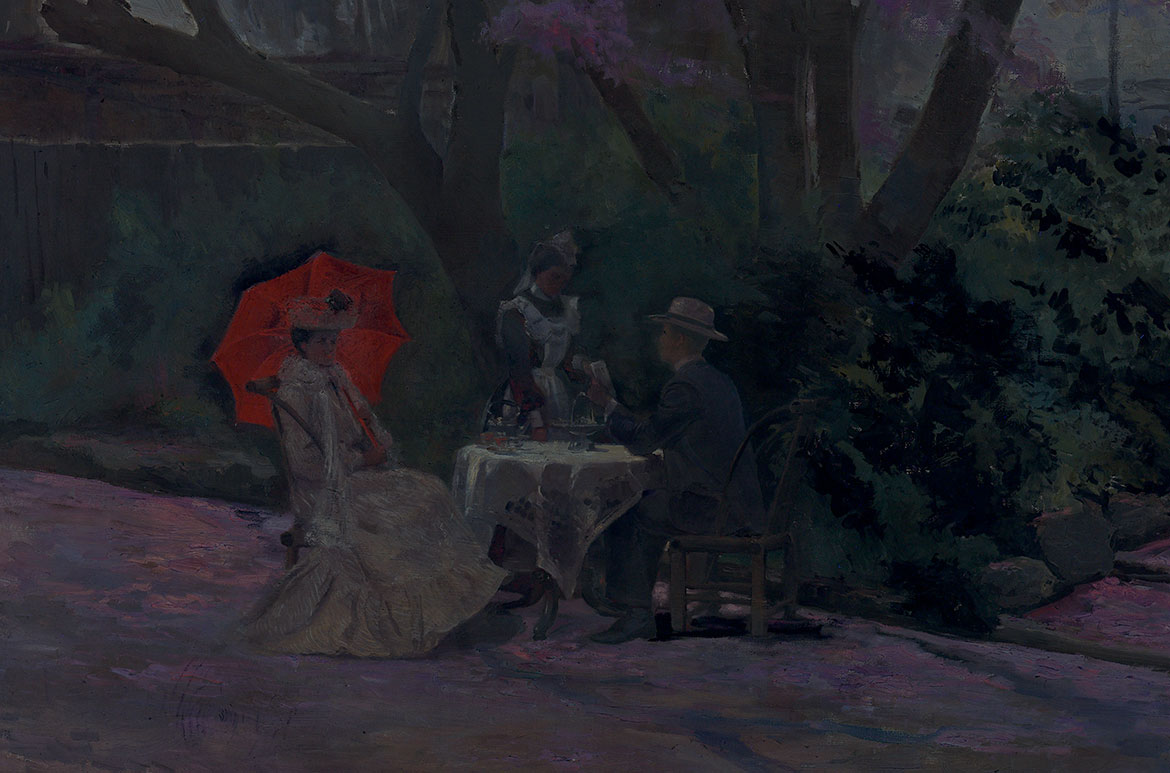
The various shades of jacaranda purple evident in the cross section above can be seen when we view the entire painting in UV light. Areas painted with Madder lake are evident with pinker fluorescence in the canopy. Selina’s red parasol, painted in a combination of synthetic alizarin crimson and Madder lake shows bright fluorescence.
We will never know why Rivers used two different reds with his cobalt blue to make the purple of his jacaranda flowers — perhaps it was to reflect interactions of light and create interest within the floral canopy, or perhaps it was a question of cost — with the less expensive alizarin crimson used in underlayers, and Madder lake saved for top layers to increase the high energy reflection of the flowers most in sun.
Anne Carter is Conservator, Paintings, QAGOMA
Gillian Osmond is Conservator, Paintings, QAGOMA
Paint samples were originally prepared in 2001 by former Senior Conservator John Hook, QAGOMA
#QAGOMA
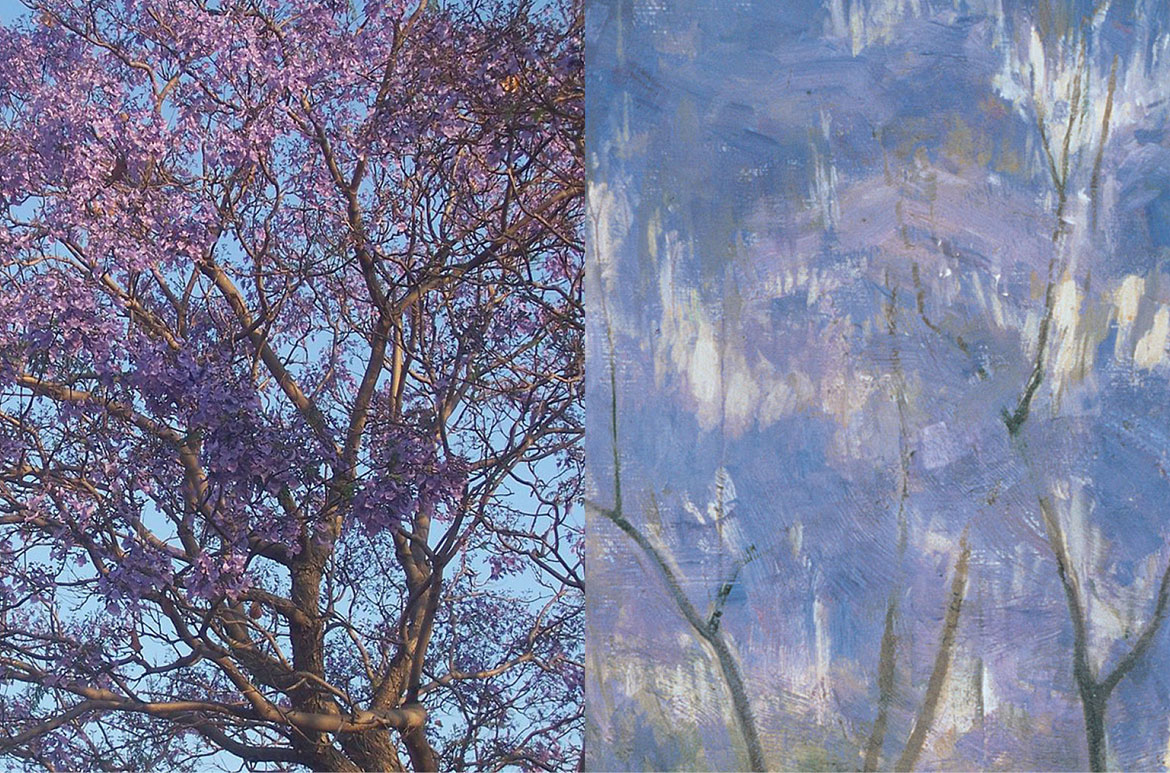
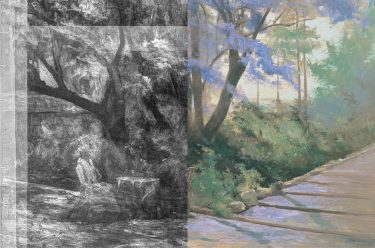

My all-time favourite painting of a jacaranda. Thanks for this technical explanation! I was at Sydney University with its famous jacaranda planted in the Quadrangle Latin Room corner. I have a B&W photo taken in 1966 – me with some friends – reading Honi Soit – the jacaranda tree behind us through the cloister opening. It fell over a few years back – and was replaced. No fears of panic to students when it flowered though indicating it was exam time – of course.